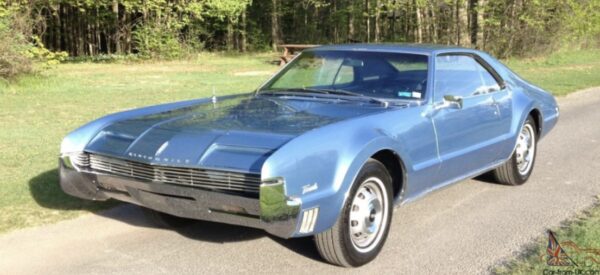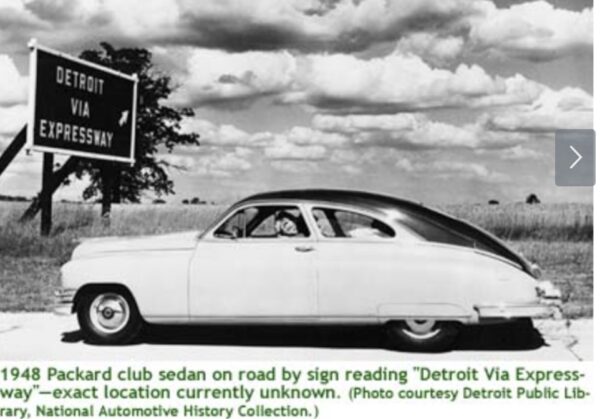Detroit’s Electric Road


OK- we saw the Toronado shown above the other day and it has drifted through our imagination ever since.That is what two-door automobiles used to look like. That blue beast demonstrated a front wheel drive and an aggressive smile on the chrome grill. That was how some of us got around in 1967.
this is a season featuring the departure of some Boomers who made history, and there is still some of it being made. There is a lot going on with the nation hurtling toward an apparently endless General Election campaign. This week alone marked the passing of Henry Kissinger and Rosalynn Carter. This morning we were informed retired Supreme Court Justice Sandra Day O’Connor had also embarked on her journey across the Styx River. Former President Carter was almost translucent in his wheelchair yesterday at the memorial ceremony, and the passing of a President will have its own special impact on other events.
We had been nibbling at some of the great issues floating about. Some are tethered together, like the climate emergency that has been looming for several decades. The Government is supporting introduction of Electric Vehicles to help combat meteorological disaster. We have ambitious schemes to somehow use additional electricity to extract, manufacture, install and maintain vast wind-farms. Which are non-recyclable and must be dumped in landfills when they wear out.
We are not going to attempt to wax eloquent about improbable solutions to possibly imaginary problems. But that is part of new technology introduction. One of the factors impacting acceptance of Electrical Vehicles is a psychological factor. Skilled professionals have termed it a thing called ‘RANGE ANXIETY.’
You have probably run across the articles in the Do-It-Yourself streams about people trying to demonstrate success with electricity. The anxious drivers include people in massive Ford F-Series trucks looking for places to charge up their vehicles. This morning’s rant is not that America’s infrastructure is not ready to support transportation network. It will take a lot of time and cash to re-wire the country, and some discouraging news about just how difficult that is going to be. Which is why we wanted to mention the three words in our title; ‘ROAD, ELECTRIC and DETROIT’ were the three that caught our attention.
After college, a group of us got those “first grownup jobs.” Some of those required a move from AnnArbor’s academic inside the 8-Mile Road city limits. We leveraged some of the once magnificent housing off Woodward Avenue, the 8-lane boulevard that shoots north out of town to stab through those prim little suburbs where some of us grew up. you may be starting to squirm a bit over a town that experienced the tough reality of transition. But there is a certain grim pride still on those roads through a disintegrating urban core.
Detroit has long been known as a pioneer in many aspects of roads, highways and the vehicles to roll on them. In addition to Henry Ford’s assembly lines that produced the Model T, many design features we accept as integral to civic development in the Motor City in the late-19th and early-20th centuries. We mention that only because of the reminders of progress and what can be accomplished with decent planning and commitment. We mention that stretch of Woodward Avenue because the mile of roadway between 6 and 7 Mile was the first mile of rural concrete pavement, opened in 1909.
The world’s first four-way traffic signal was installed at the intersection of Woodward and Fort downtown. The Wolverines also chased innovation in process, and were the second state (and jurisdiction) in the world to assign numbers and post a state trunkline system on which the first roadside park was created along US-2 in the Upper Peninsula in 1919. Woodward was the experimental showcase in the mid-1920s when it opened an 18-mile long, eight-lane concrete segment of Woodward Ave northbound between Detroit and Pontiac.
Paving America was an amazing project, from that first concrete pour in 1909 to what was done by the start of the 21st century. Today- this amazing transformational time- provides opportunities and challenges of the laws of physics. The ability of America to lead the world in manufacturing and construction demonstrates that even highly unlikely projects can be accomplished. Considering the level of effort already demonstrated in America’s roadway, a comprehensive history can be found in The History of Roads in Michigan. So, it is useful to have that sort of background to the news.
This morning? The City of Detroit “opened the country’s first road capable of wirelessly charging electric vehicles as they drive this week.” Reducing the concern of many motorists about running out of juice on the roads, this new demonstration is one that provides possibilities for progress. Like the first mile on Woodward Avenue in 1909, it is still a preliminary technical step and only a quarter-mile demonstration project to eliminate concern that all those electric cars have to be simultaneously plugged in the garage wall in the evening.
If it works- and there are no guarantees on capabilities- it is meant to show the feasibility of wireless charging as a supplement to an eventual nationwide charging network for electric vehicles. There is history to be repeated in terms of construction funds and coordination. They will also be an epic story to go along with these sorts of developments. Back at the turn of the previous century, when the first shovels and forms were being placed on Woodward Ave, could any of those engineers have imagined they were starting the Eisenhower Interstate System?
We will try to keep the circle apprised at what is happening on the technology front, since if there is not enough charging capacity or the ability to charge while operating, none of this enormous effort makes much sense. The idea relies on the technology using magnetic resonance induction, discovered by. that amazing Nikola Tesla with tweaks from our generation’s Elon Musk. Effectively, the process is changed by replacing gas delivery systems to the vehicles with large copper coils placed under the road. These will create magnetic fields, which induce electric currents to be transmitted to a receiver in the car as it drives through. Experts claim the process is not harmful to humans, though of course we have heard similar assertions from those folks about all sorts of things lately.
So, that is the news from Detroit this morning! We here have had a distinct lessening in any range anxiety. Not that we were going to give up our gas-powered SUVs. We will keep you posted on progress. Enhanced Roads could be the answer we have been waiting for!
Copyright 2023 Vic Socotra
www.vicsocotra.com
